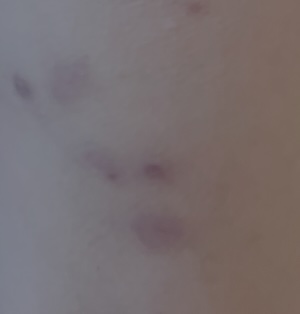Cantharidin: bettlejuice blistering agent
15th Dec 2014
 Cantharidin, also known as "beetle juice," is a vesicant (blister-causing agent) derived from blister beetles. It's primarily used topically to treat warts and molluscum contagiosum, a viral skin infection.
Cantharidin, also known as "beetle juice," is a vesicant (blister-causing agent) derived from blister beetles. It's primarily used topically to treat warts and molluscum contagiosum, a viral skin infection.
Cantharidin works by causing acantholysis, which leads to blistering and ultimately the removal of the affected skin cells Cantharidin is a natural toxin derived from blister beetles and is classified as a vesicant, meaning it causes blistering of the skin. It has a long history of use in dermatology, primarily for the topical treatment of warts (including common, plantar, and periungual warts) and molluscum contagiosum, a viral skin infection.
Cantharidin is absorbed by the lipid membranes of epidermal keratinocytes, where it activates the release of neutral serine proteases. Desmosomal Plaque Breakdown: These enzymes break down the desmosomal dense plaques, which are essential for cell-to-cell adhesion in the skin.
The breakdown of these plaques leads to the detachment of tonofilaments and loss of cellular connections (acantholysis), resulting in intraepidermal blistering at the application site. Blister Formation: Blisters typically develop within 24–48 hours after application and resolve in 4–7 days, facilitating the removal of affected skin cells.
Cantharidin treatments often only include only larger bumps as it is too harsh to apply across a large patch of skin.
Mollenol can be used for molluscum treatment even when molluscum is widespread.
